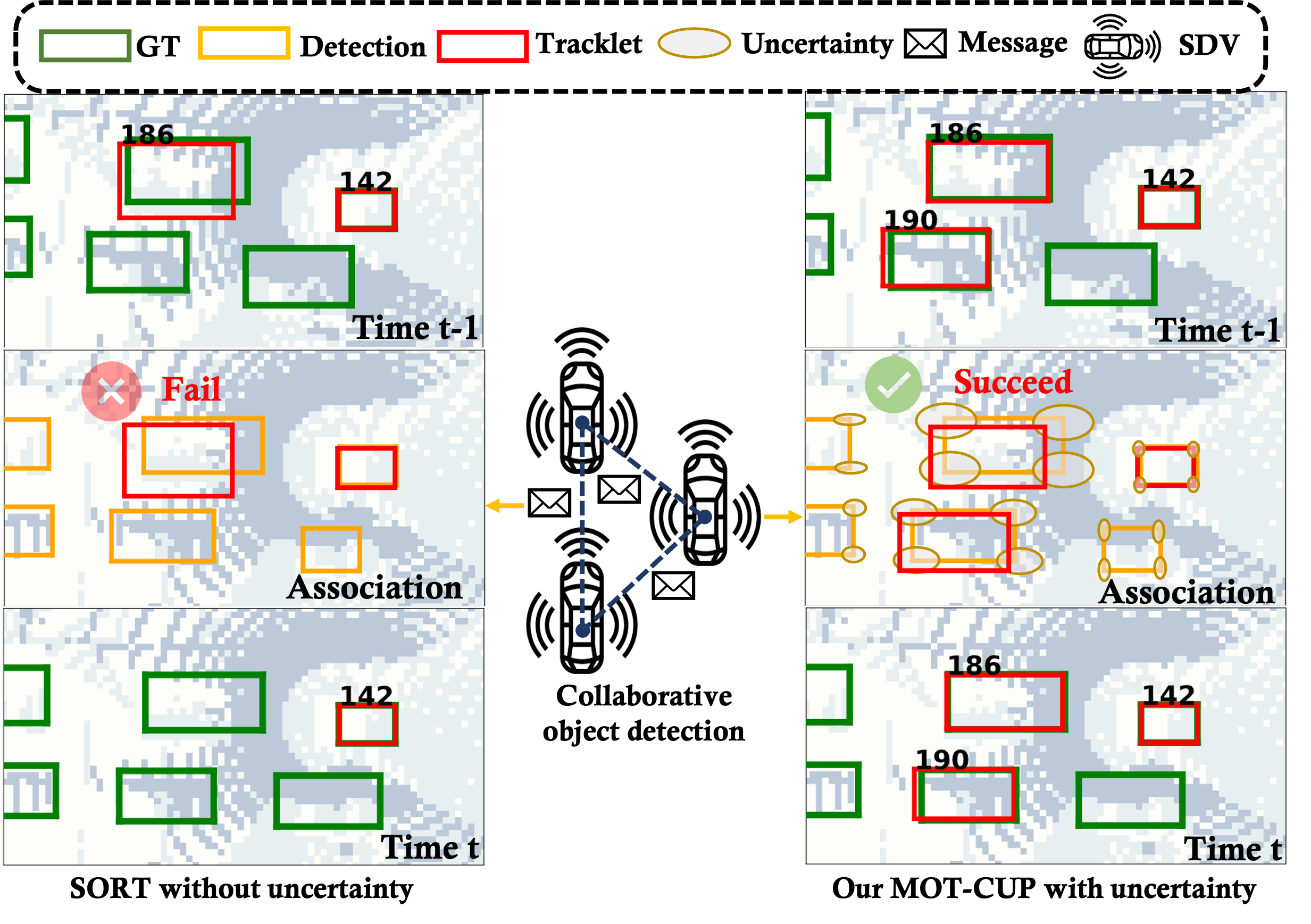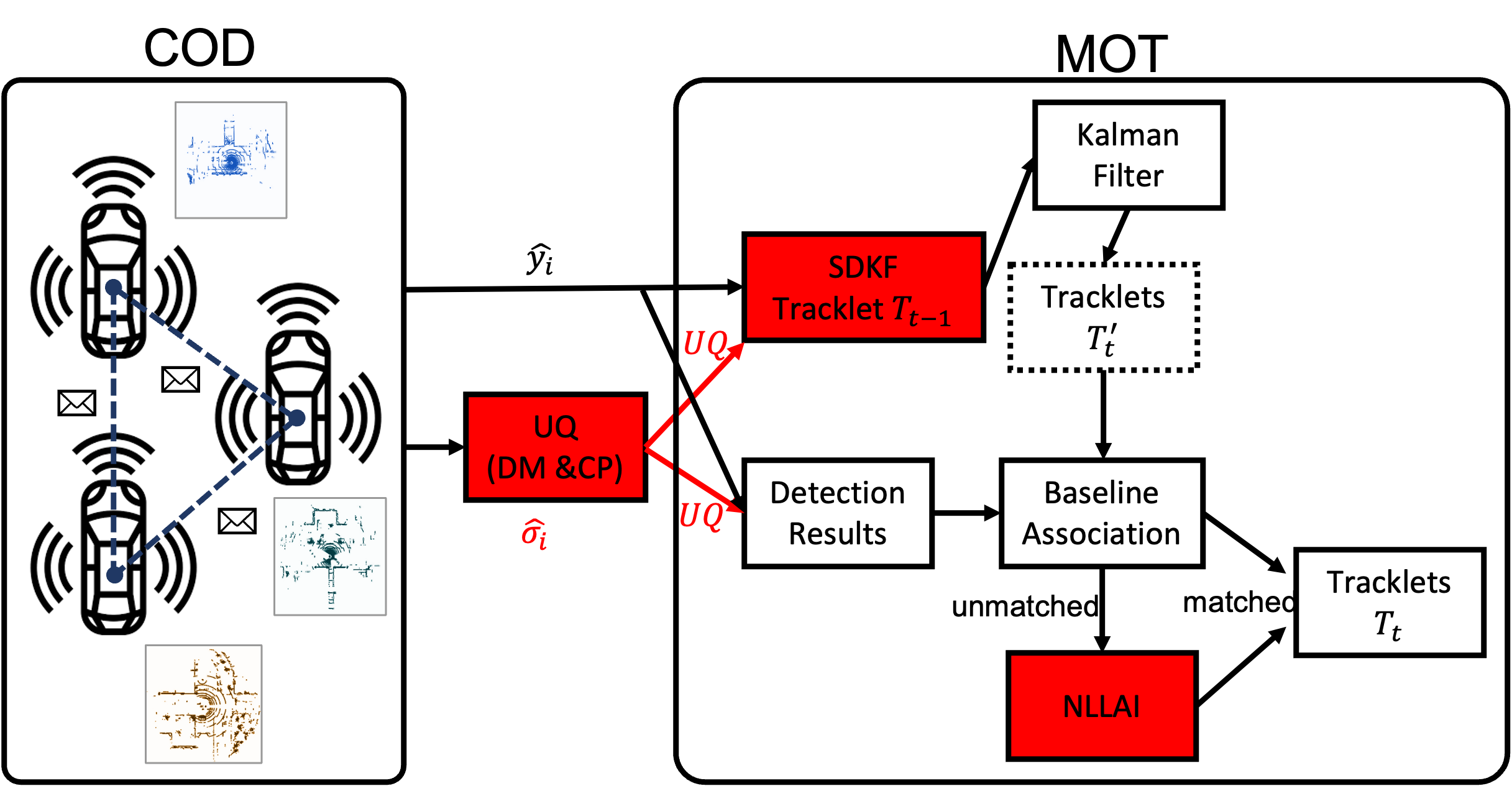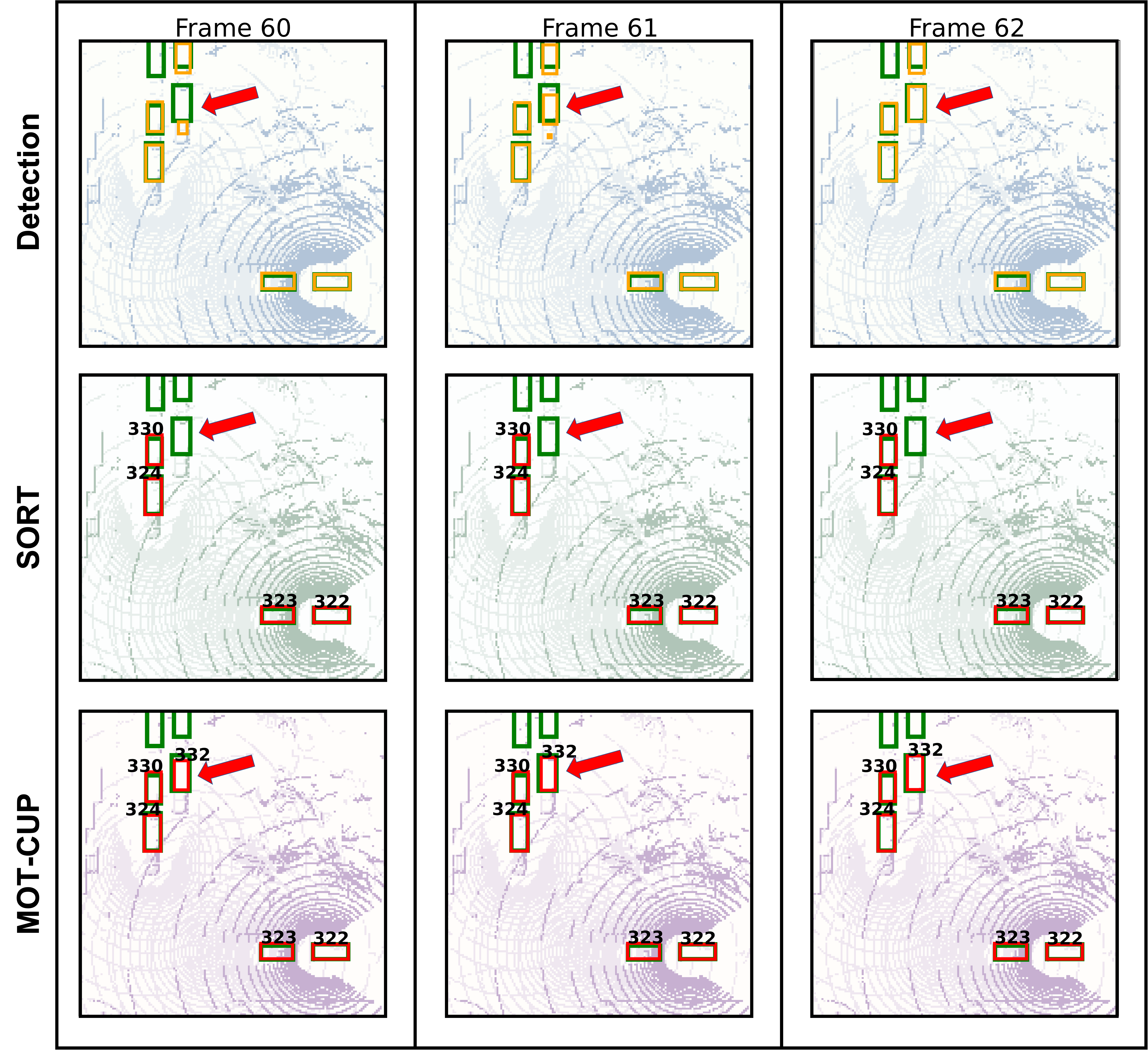
Object detection and multiple object tracking (MOT) are essential components of self-driving systems. Accurate detection and uncertainty quantification are both critical for onboard modules, such as perception, prediction, and planning, to improve the safety and robustness of autonomous vehicles. Collaborative object detection (COD) has been proposed to improve detection accuracy and reduce uncertainty by leveraging the viewpoints of multiple agents. However, little attention has been paid on how to leverage the uncertainty quantification from COD to enhance MOT performance. In this paper, as the first attempt, we design the uncertainty propagation framework to address this challenge, called MOT-CUP. Our framework first quantifies the uncertainty of COD through direct modeling and conformal prediction, and propogates this uncertainty information during the motion prediction and association steps. MOT-CUP is designed to work with different collaborative object detectors and baseline MOT algorithms. We evaluate MOT-CUP on V2X-Sim, a comprehensive collaborative perception dataset, and demonstrate a 2% improvement in accuracy and a 2.67X reduction in uncertainty compared to the baselines, e.g., SORT and ByteTrack. MOT-CUP demonstrates the importance of uncertainty quantification in both COD and MOT, and provides the first attempt to improve the accuracy and reduce the uncertainty in MOT based on COD through uncertainty propogation.

Overview of our MOT-CUP framework. The red color highlights the novelties and important techniques in our MOT-CUP framework. In the collaborative object detection stage (COD) stage, we rigorously calculate uncertainty quantification (UQ) of each object detection via direct modeling (DM) and conformal prediction (CP). In the motion prediction stage of MOT, we adopt a Standard Deviation-based Kalman Filter (SDKF) to enhance the Kalman Filter process, that leverages the UQ results and predicts the locations of the objects in the next time step with higher precision. In the association step, we first apply the baseline association method and then associate the unmatched detections and tracklets with the Negative Log Likelihood similarity metric, called NLLAI.

Visualization of results of the detection, original SORT, and our MOT-CUP framework over consecutive three frames. The collaborative object detector we used here is Upper-bound. In this visualization, green boxes are ground truth bounding boxes, orange boxes are detected bounding boxes, and red boxes are tracklets' bounding boxes as the output of MOT. The numbers beside the red boxes indicate object IDs. We observe that our MOT-CUP outperforms the original SORT algorithm in tracking object 332, as indicated by the red arrow. Furthermore, our MOT-CUP improves the accuracy of location, compared with the object detector, such as object 332 in frame 60. Overall, our results demonstrate the importance of considering uncertainty in MOT.
@article{Su2023mot_cup,
author = {Su, Sanbao and Han, Songyang and Li, Yiming and Zhang, Zhili and and Feng, Chen and Ding, Caiwen and Miao, Fei},
title = {Collaborative Multi-Object Tracking with Conformal Uncertainty Propagation},
year={2023},
}